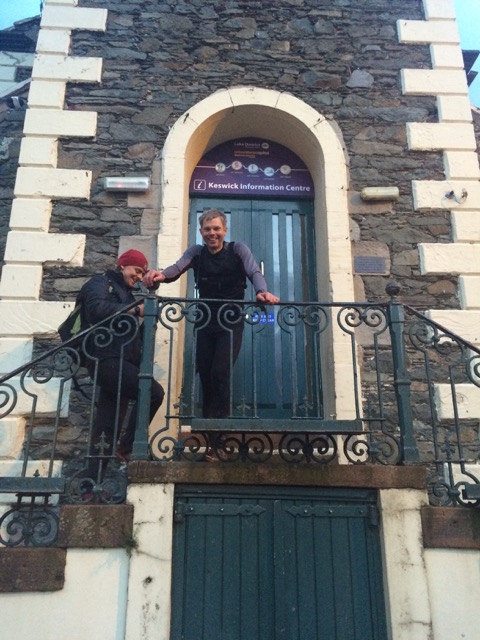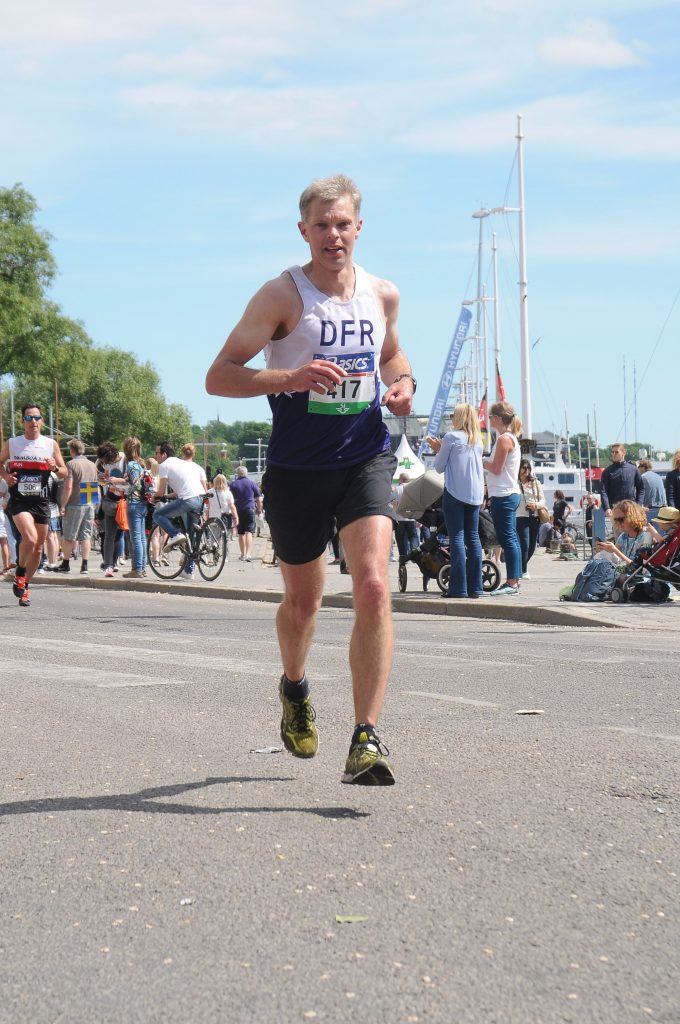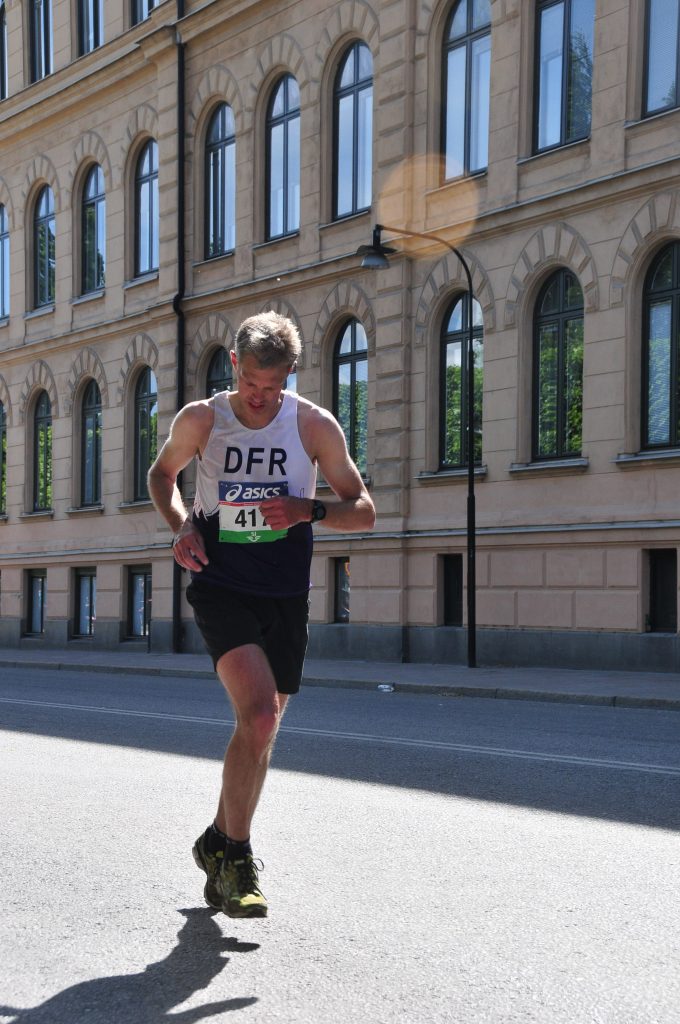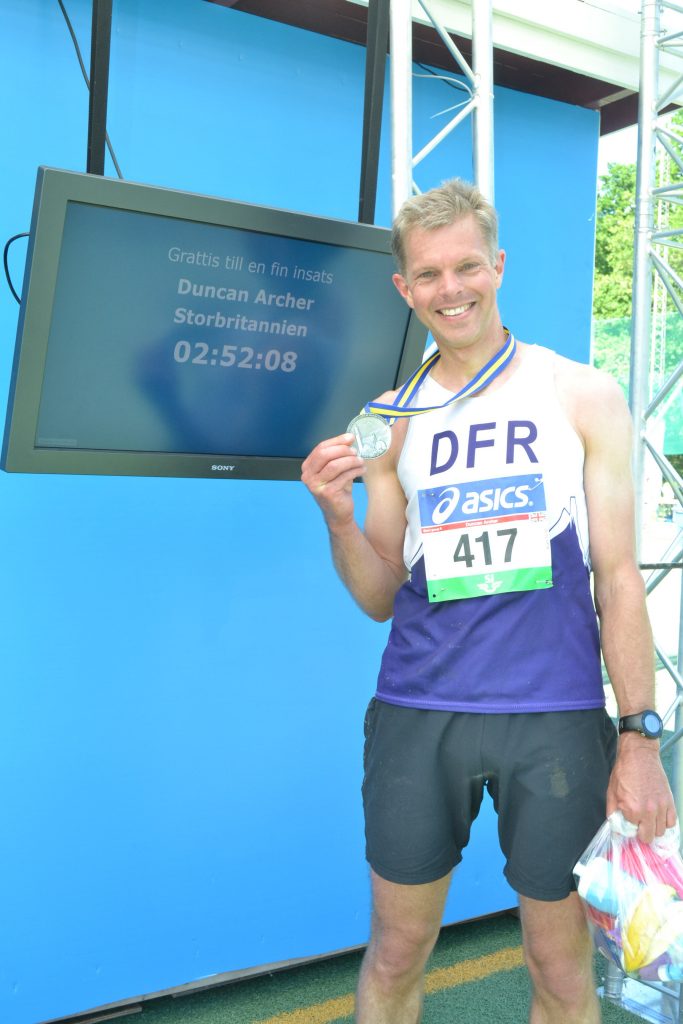Another runner eases past, making it seem effortless, whilst my trainers slap the tarmac, wasting what little energy I have left. Crowds pass in a blur, not due to my speed but because tunnel vision takes over, just focussing on the road ahead. That light spring in the step an hour ago seems a distant memory. I check my watch, but I’m only slightly nearer the finish than when I checked it 30 seconds ago, and 30 seconds before that. Here I finally am, doing the Stockholm marathon, experiencing what thousands have experienced before me – the tiredness of the last few miles of a marathon.
Let’s rewind the clock… Firstly why a road marathon? I have no problem with two marathons over two days, each with 2,000m of mountainous ascent, and a pack on my back. But road running has never been my thing. I started orienteering aged 11, and have been running through forests, up mountains, and across the fells ever since. My wife Pippa jokes I have the gait of a moose, ideal for bounding through heather, but somewhat ungainly on the flat. My road racing experience through the end of 2015 amounted to a 10 mile race in the early 2000s whilst living in London (~60 mins), and the Middlesbrough 10km in 2009 (35:26). However I’ve always seen the attraction of a road race, challenging yourself against an objective target in relatively controlled conditions, and pushing yourself to be as good as you can in a measurable way. Also, a road race – and a marathon time in particular – is something non-running friends can comprehend, when they cannot fathom a mountain marathon.
Why Stockholm? My brother has lived with his family in Sweden for many years and announced last autumn he was going to do the Stockholm marathon. I’ve had various mountain marathon successes in recent years, and a good Bob Graham Round in June 2015, so I was wondering what next? It seemed like the time for a marathon had come, and what better motivation than having someone to share training stories and targets with. I’ve also been to Stockholm several times, it is a beautiful city, and I had plenty of time to prepare. So the idea was born.

I did the elite OMM in October 2015 with Shane, and despite fatigue in the latter part of both days (thanks Shane for helping me through!) a few weeks later I was feeling fairly well recovered, and I slowly built up the mileage. I’ve spent many winters with coughs and colds, so I really focussed on resting well and keeping healthy, and strung together a few months of good training. Training for long distance events requires miles and hours, no-one can deny sometimes you have to be selfish, and I will confess my best training happened whilst Pippa was away for 5 weeks pursuing her research dreams in Antarctica. 1 mile reps, hills for strength, long runs, and race-pace runs all came and went.
Having done so few previous road races I needed to test myself. On a spare weekend I entered the salubrious Great North West Half Marathon in Blackpool, a flat course up and down the seafront, what could be better for gauging my pace? A nice summer day that’s what. Sadly race day in February came with very strong winds, waves crashing over the sea-wall onto the “out” section of the course, and a headwind on the “back” section. Still, I managed a respectable time (1:21:41), and one which given the conditions made me think a 2:45 marathon was achievable.

But then I got ill in the lead up to Easter, and didn’t race the JK. I recovered for an excellent climbing holiday in Morocco, apart from badly spraining my ankle walking out from the crag one day. Cue several weeks of physio and rest, followed by cross-training on the bike and in the pool (including one session of aqua-jogging – never again). Slowly my thoughts moved back from not making the start line, to at least completing the marathon, to maybe still achieving my goal.
As the day approach I studied and re-studied the race route, familiarised myself with drinks points, feeding stations (one dedicated to salty gherkins?!), landmarks and the two 30m “hills” over a bridge. I went over pace times my head. Finally race day came, blue skies, sunny, and 18 degrees with a breeze, not ideal but thankfully cooler than the day before. Pre-race nerves gave way to excitement on the start line and finally the gun. 13,000 runners eased themselves onto the streets of Stockholm. Checking my watch in the first few km, pace was good, a bit faster than needed, but it felt ok and surely a few seconds in the bank was no bad thing (…. what was that noise in the back of my head, alarm bells?…). I was staying hydrated, taking on shot blocs and a banana, halfway came feeling good, and the gherkins were declined.


Then gradually it started to feel like an effort. Runners I’d been keeping pace with eased away, and after a couple of small efforts to hang on they drifted out of sight. Through 25km and nearly 30km my times were still reasonable, but the signs were there. This was no longer fun. Keep telling myself to focus on running tall, head up, one foot in front of the other. Slowly the km markers came and went, as my min/km crept up. Taking on refreshments at any opportunity. Repeated checks of the watch as if it might make me go faster or the finish line come sooner. My goal of 2:45 was out the window, and the mental faculty to calculate what finish time I was now on for eluded me. Finally the last bends came, cheers from family supporters seeing me through, into the historic Stockholm 1912 stadium, a mention on the commentary and I raised a hand to no-one in particular. Over the finish line in 2:52:08, my immediate thought was relief it was over. But that was replaced by an amazing happiness – despite the effort and tiredness, I’d come from no experience in this sort of race to still finish in a hugely respectable time, and I was smiling from ear to ear, soaking up the atmosphere in the stadium.

Could I have done better? On the day I’m not sure. Was my goal realistic? Looking back I missed several weeks of important training through illness and injury. Tactically I ran a poor race on the day, getting sucked into running too fast early on, when lots of evidence suggests sticking to a game plan, with a consistent pace or even a negative split, is the way to get a PB. Would I have even wanted to do my sub-2:45 goal first time? Experiencing some pain and disappointment often makes a goal much more satisfying when finally achieved. But hang on…. what does that mean – that I should try another road marathon? We shall see. For now I can hear the hills and forests calling, and I’m happy taking some rest, before a couple of orienteering trips over the summer, but then who knows….

